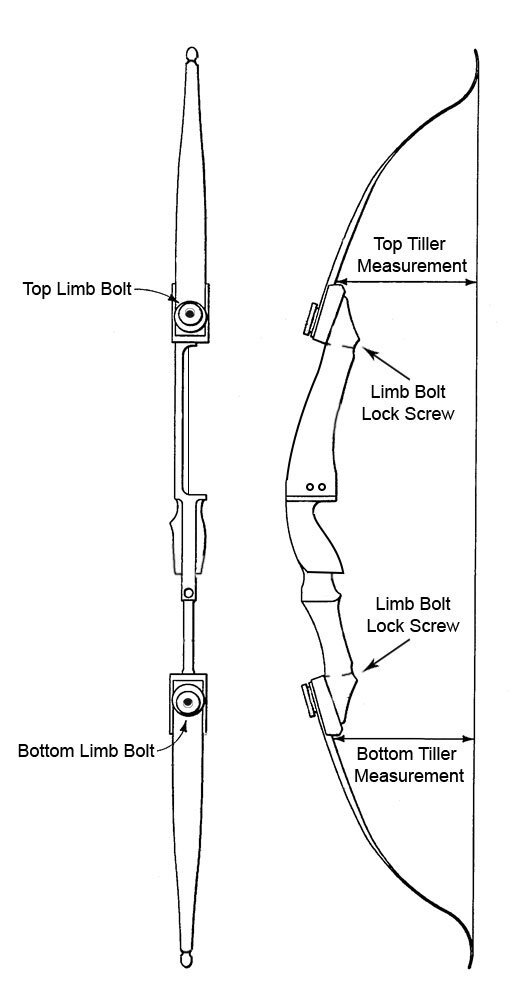Bow-Tuning and Equipment Checks
For all of you tinkerers out there, this post is for you! The bow is a complex tool that requires maintenance and tuning, so we’re going to cover the different checks that will keep your equipment in tip top shape!
Equipment Checks:
There are certain parts you should check prior to each use to ensure the safety of the equipment.
Limbs should be checked for cracks along the edges and near the tips as they are quite delicate and can easily be damaged. Limbs should also be checked for warping (or twisting) which can occur when they’re left in the heat or stored improperly. You can check for warping by pointing the bow at the ground and looking down the length of the bow-string from the tip nearest to you; make sure both limb tips are in alignment.
Note: Limbs should be stored in a cool, dry location, away from sunlight. Try to avoid leaving bows and limbs strung after use or under pressure of other equipment.
Bow-strings are made from one continuous loop of string material, so any drying, fraying, or discoloration in the string should be managed closely; damage to one strand means damage to the rest! Waxing the bowstring regularly so it feels slightly tacky and appears smooth is important. Check out “Archery 101: How to Wax a Bowstring” for a step-by-step explanation of the waxing process!
If you need to replace a string, click here for a link to a string from Lancaster Archery Supply!
The nocking point should be tight and immovable because a loose one can drastically slow the speed of the string!
Limb bolts, sight parts, and stabilizers should be tightened and secure to reduce vibration and rattling.
Brace Height
https://www.lancasterarchery.com/blog/whats-a-bow-square-aka-t-square/
Once your bow is strung and you’ve completed the routine checks, it’s time to check the brace height. This is the distance from the deepest point of the grip to the string. Why does it matter, you ask? The brace height affects the point from which the arrow is launched on the string. This measurement can change due to string-stretching or as a result of the string being removed when the bow is taken down. The brace height should be checked each time the bow is set up to ensure consistency.
To check the brace height, string the bow, then use your bow-square/T-square (a standard archery measurement tool) to measure the distance between the deepest part of the grip to the string. Here are the standard brace heights for Arc Rolan Recurve Risers:
62” Riser: 8”
64” Riser: 8”1/4
68” Riser: 9”
If your brace height measurement is too low, add some twists to the string by un-stringing the bow and removing the loop from the lower limb. If the measurement is too high, repeat the same process but remove some twists. Remeasure the brace height until you’re satisfied with the number. If you take shots in between adjustments, you might even be able to hear the difference in the changes you’re making!
understandingarchery.wordpress.com
Tillers
A tiller measurement is the perpendicular distance from the base of the limbs (where the limb and the limb pocket connect on the back of the riser) to the string. A tiller reading is the top measurement subtracted from that of the bottom. A positive reading means the top limb is working more than the bottom, a negative result means that the lower limb is working more than the top, and an equal reading means both limbs are working together.
One neat tip one can try to adjust the tiller height on an Arc Rolan Riser is to use old hotel room keys or credit cards cut to fit between the limb and limb-pocket which can be used to decrease the difference between the two tiller measurements. This method can also be used to to account for limb twisting (though some of this is natural). For a drastic twist to the left, try adding a piece of a cut plastic card to the left limb pocket, then replace the limb and see if the twist has diminished enough.
While tedious for those who are not natural tinkerers, bow-tuning is an essential part of accuracy and consistency in archery. So take some time to get well acquainted with your equipment, the knowledge comes with bragging rights! For more information on bow-tuning, click here to check out a detailed account from Online Archery Academy!




